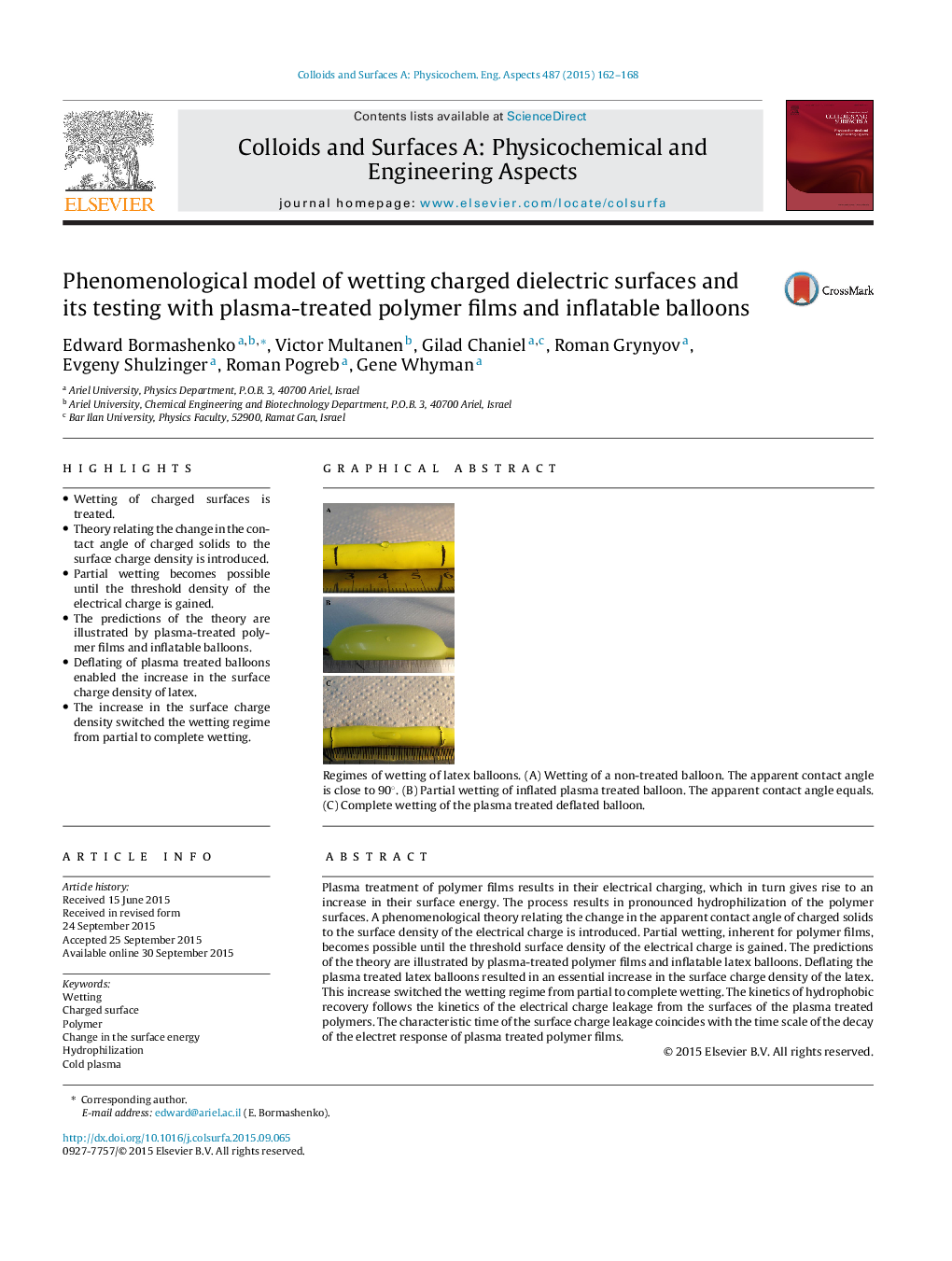| Article ID | Journal | Published Year | Pages | File Type |
|---|---|---|---|---|
| 591961 | Colloids and Surfaces A: Physicochemical and Engineering Aspects | 2015 | 7 Pages |
•Wetting of charged surfaces is treated.•Theory relating the change in the contact angle of charged solids to the surface charge density is introduced.•Partial wetting becomes possible until the threshold density of the electrical charge is gained.•The predictions of the theory are illustrated by plasma-treated polymer films and inflatable balloons.•Deflating of plasma treated balloons enabled the increase in the surface charge density of latex.•The increase in the surface charge density switched the wetting regime from partial to complete wetting.
Plasma treatment of polymer films results in their electrical charging, which in turn gives rise to an increase in their surface energy. The process results in pronounced hydrophilization of the polymer surfaces. A phenomenological theory relating the change in the apparent contact angle of charged solids to the surface density of the electrical charge is introduced. Partial wetting, inherent for polymer films, becomes possible until the threshold surface density of the electrical charge is gained. The predictions of the theory are illustrated by plasma-treated polymer films and inflatable latex balloons. Deflating the plasma treated latex balloons resulted in an essential increase in the surface charge density of the latex. This increase switched the wetting regime from partial to complete wetting. The kinetics of hydrophobic recovery follows the kinetics of the electrical charge leakage from the surfaces of the plasma treated polymers. The characteristic time of the surface charge leakage coincides with the time scale of the decay of the electret response of plasma treated polymer films.
Graphical abstractFigure optionsDownload full-size imageDownload as PowerPoint slideRegimes of wetting of latex balloons. (A) Wetting of a non-treated balloon. The apparent contact angle is close to 90°. (B) Partial wetting of inflated plasma treated balloon. The apparent contact angle equals. (C) Complete wetting of the plasma treated deflated balloon.
